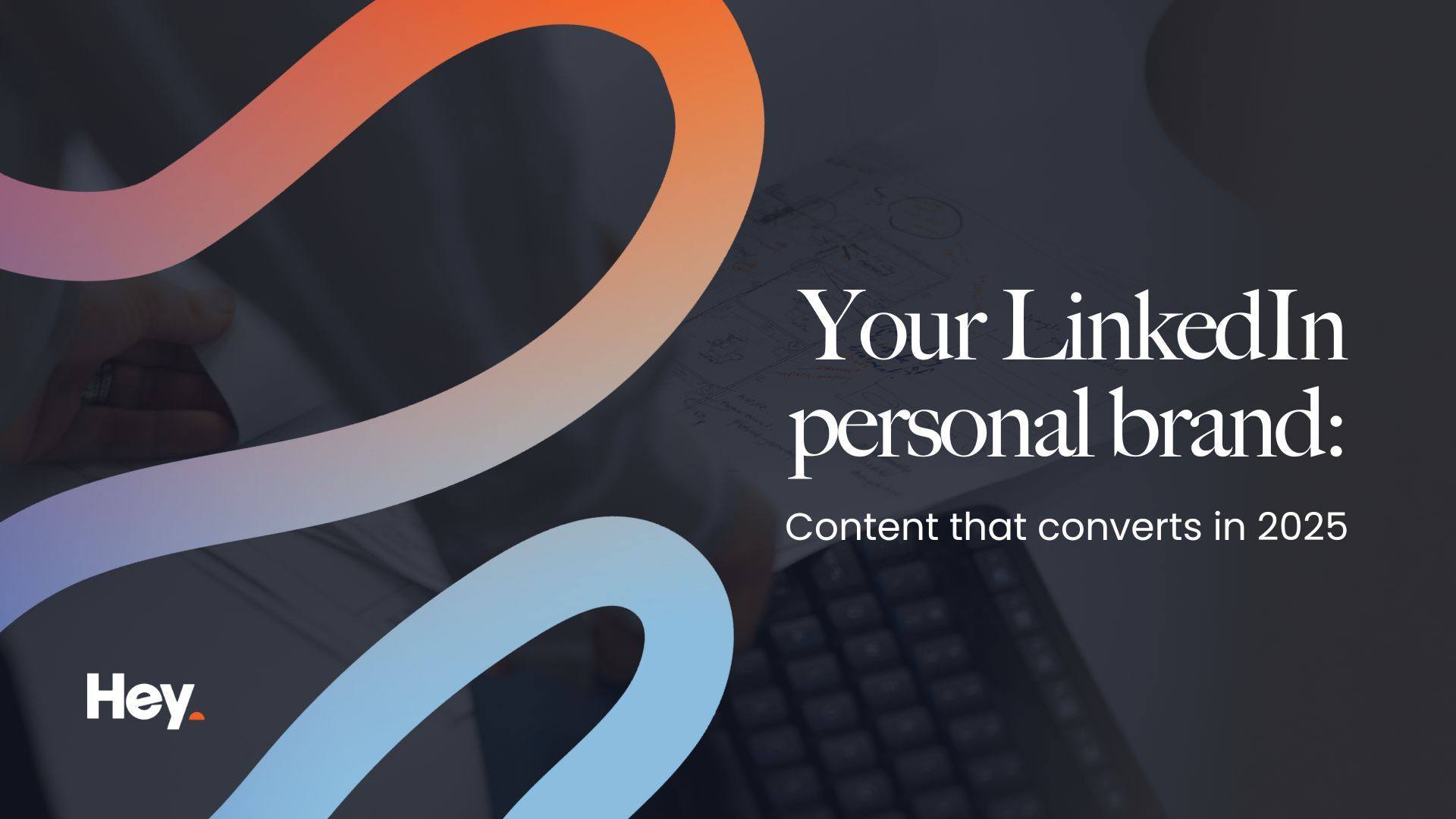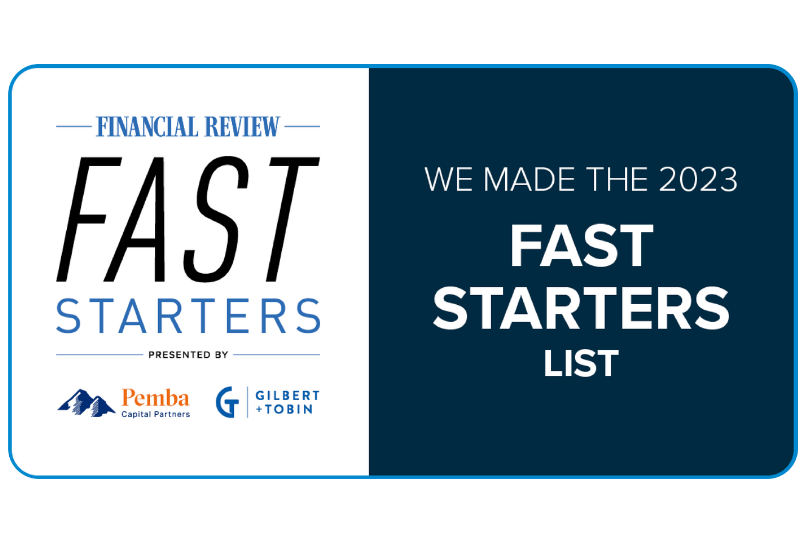WRITTEN BY THE HEY MARKETING TEAM
Digital Diary
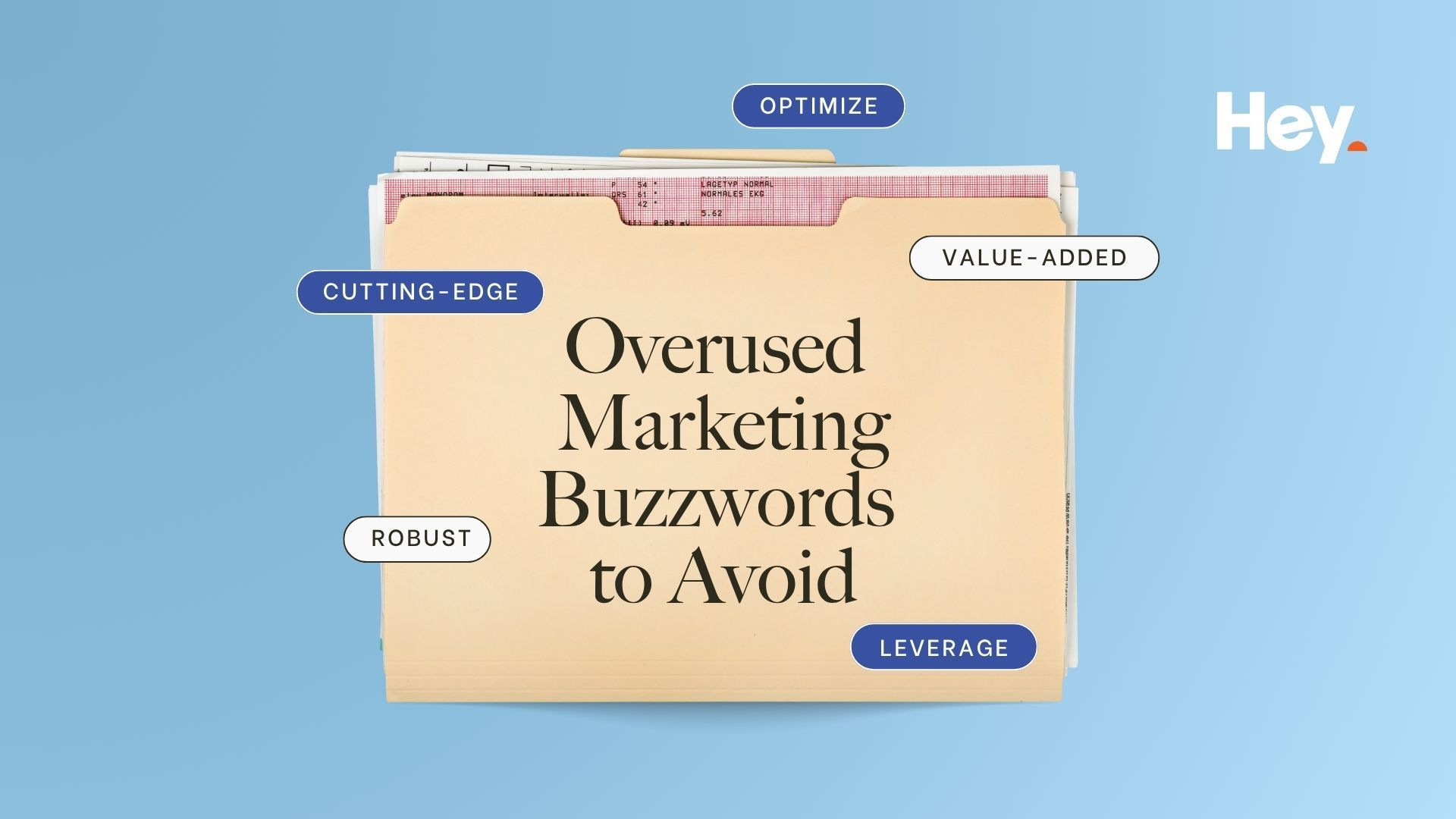
By Madeleine Riehl
•
November 17, 2025
Tired of hearing the same marketing buzzwords that mean… well, nothing? You’re not alone. From “disruptive” to “game-changer,” these overused phrases can make your brand sound generic instead of genuine. Here’s how to ditch the fluff and speak with clarity, confidence, and real credibility. 1. Disruptive 🚫 Meaningless unless you’re actually changing an industry. ✅ Instead: “New approach”, “Innovative solution”, or explain how it’s different. 2. Authentic 🚫 Overused to the point of irony. ✅ Instead: Show the authenticity — don’t say it. Use storytelling, real voices, real people. 3. Synergy 🚫 Jargon-heavy and vague. ✅ Instead: “Working better together”, “Collaboration”, “Combined strengths”. 4. Game-changer 🚫 Unless it actually changes the game, this feels hollow. ✅ Instead: “Real impact on…”, “Major improvement in…” 5. Next-Gen/Next-Level 🚫 Lacks specificity. Next what? ✅ Instead: Explain what’s improved or different — faster? Easier? More powerful? 6. Cutting-Edge/Leading-Edge 🚫 Everyone claims this. Few prove it. ✅ Instead: Use a concrete example of the technology or practice that sets you apart. 7. Leverage 🚫 Sounds corporate and stiff. ✅ Use “Use”, “Apply”, “Tap into” instead — simpler and clearer. 8. Growth Hacking 🚫 Buzzwordy and often associated with spammy tactics. ✅ Instead: “Rapid growth strategy”, “Smart marketing tactics”. 9. Scalable 🚫 Can feel like investor speak, not customer-focused. ✅ Explain why it scales: “Built to grow with your business”. 10. Low Hanging Fruit 🚫 Feels lazy and condescending. ✅ Instead: “Quick wins”, “Immediate opportunities”. 11. Holistic 🚫 Vague and often misused. ✅ Instead: “All-in-one”, “Complete solution”, or be specific about what’s included. 12. Robust 🚫 Generic and unclear. ✅ Describe what’s strong about it.... durable? Secure? Flexible? 13. Paradigm Shift 🚫 Dramatic for the sake of drama. ✅ Be concrete: “A new way to think about…” 14. Optimize 🚫 Valid word, but can be overused without substance. ✅ Instead: Say what’s being improved, and how. 15. Value Added 🚫 Redundant. (If it doesn’t add value, why mention it?) ✅ Just say what the actual benefit is. If you can’t explain it simply, your customer won’t understand it either. Buzzwords feel safe, but they water down your message. Try swapping them for clear, conversational language that’s backed by proof, stories, or results. Need help sharpening your brand voice? Let’s make your message clear.
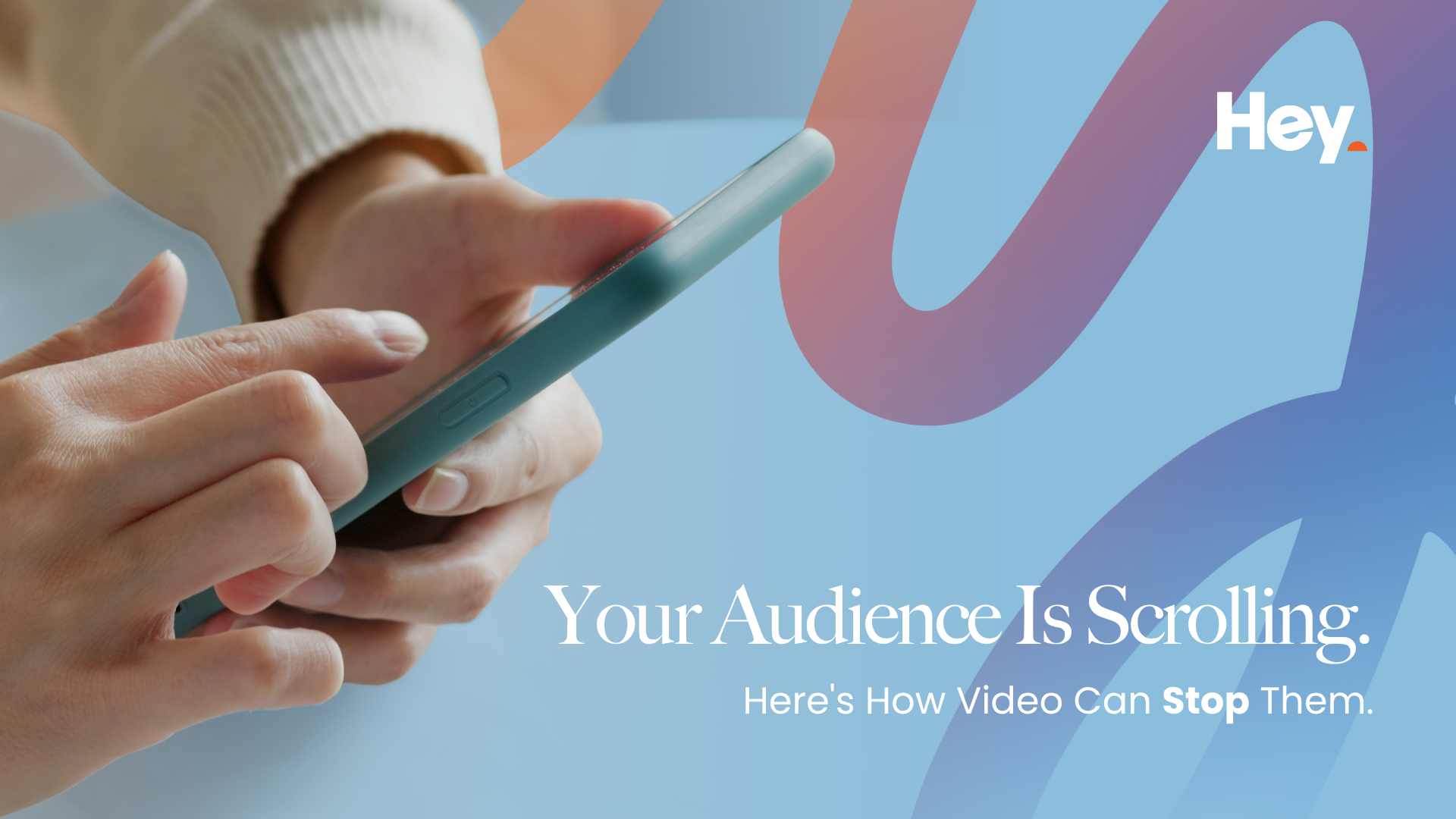
By Hannah Cook
•
November 10, 2025
Let's be real: right now, somewhere out there, your ideal customer is lying in bed watching a 12-second video of someone making pasta. Or folding laundry. Or taking you through their day in the life. Everywhere you look online, short-form video is setting the pace. From quick product reveals to fast how-to tips & behind-the-scenes snippets, bite-sized clips are now driving the way people interact online. If your brand isn’t speaking this language yet, we need to talk. Why Short Form Video Is King Let’s be honest, our attention spans are short. Thanks to TikTok, Instagram Reels, and the hypnotic pull of doom scrolling, we've all become masters of the split-second swipe or scroll. If something doesn't grab us immediately, we're gone. The great news is that this isn’t bad news for brands. It’s actually an incredible opportunity. Short-form video content has opened the door to connect with people in a way that feels immediate and authentic. In just a few seconds, brands can tell a story, highlight a product or spark curiosity, all while showing up where your audience already is (their ‘For You’ pages at 10pm!) The beauty of these platforms is the interaction they can create. Comments, shares and likes give direct & instant feedback, helping brands see what works and refine their approach on the go. How Do You Actually Do This In Your Social Media Mix? The heart of short form video is storytelling. Not in a fancy, corporate or over-produced way. We're talking real, human storytelling that makes people stop mid-scroll and pay attention. In an endless feed of content, standing out means showing up as you - addressing pain points, sharing wins, and maybe cracking a joke or two. Here's how to get started without overthinking it: 1. Know Your Audience Take the time to learn what your customers actually care about by using surveys, website analytics & social media insights to uncover their interests and challenges. Then build clear audience profiles so your content speaks directly to the people you want to reach. 2. Tell Real Stories Share genuine moments. Behind-the-scenes footage of your team, customer wins & even the occasional blooper. Authenticity builds trust faster than any polished ad ever could. And if humour fits your brand? Use it, but just keep it natural! 3. Inspire & Connect Highlight real wins and challenges that align with your brand values. Show empathy and keep your content relevant to what’s happening right now, this makes your brand feel more human and relatable. 4. Focus On Quality, But Keep It Real Yes, optimise for each platform. Yes, use good lighting and clear audio. But don't get so caught up in perfection that you lose the vibe. Encourage engagement by asking questions, sharing hot takes, or inviting opinions. The proof? It's in the pudding. Short-form video isn't just a nice-to-have; it's a game-changer. Our Hey clients have seen wild results, like one business that scored a 272% increase in impressions across Instagram and Facebook. We achieved this by partnering with a local journalist & influencer in our region to create authentic UGC style content - showcasing real local talent, asking quick-fire fire digestible questions & sharing off-the-cuff moments that resonated with the community. If you're still on the fence about short-form video, let this be your nudge. Your audience is already scrolling. The platforms are ready. The tools are there. All you need is the courage to hit record and be yourself.
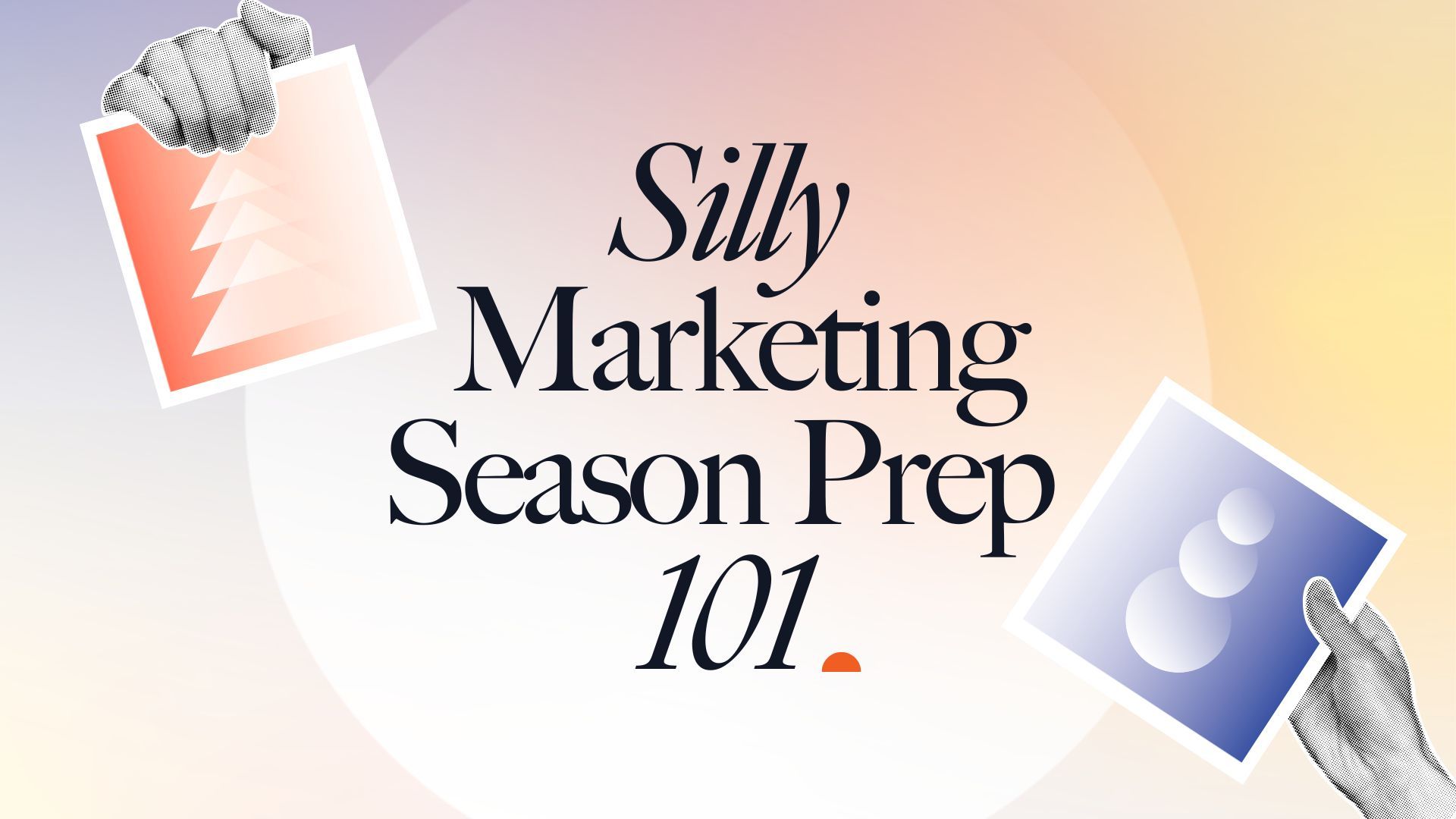
By Adam McGhee
•
November 3, 2025
The holiday season is upon us, also referred to as the ‘silly’ season, and for small to medium businesses, it's a golden opportunity to boost sales and strengthen customer relationships. But with the digital landscape buzzing with festive promotions, how can you ensure your brand or business stands out without breaking the bank? Here are some practical, no-nonsense strategies to make the most of this silly season: Flash Sales & Social-Only Deals The end-of-year rush is prime time for exclusive deals. Flash sales, especially those exclusive to your social media followers or website visitors, can create a sense of urgency and reward loyalty. Black Friday and Cyber Monday are your chances to offer irresistible deals that drive traffic and conversions. Boxing Day is a perfect opportunity for customers to grab items they missed before the holidays now at discounted prices. To maximize impact, use compelling calls to action like “Hurry, limited time only!” or “Exclusive deal for our followers.” Consider adding perks such as free shipping, gifts with purchase, or buy-one-get-one-free offers to sweeten the deal. Stick to What Works The holiday season is not the time to test unproven marketing tactics. Rely on the strategies that have worked for you throughout the year. Consistency in messaging and branding helps maintain customer trust and recognition. Pay attention to what your customers have shown interest in leading up to the holiday period. Focus your campaigns on these popular items or services to increase the likelihood of conversion & leave testing new waters to the new year. Engage Through Social Media Social media is a powerful tool for reaching your audience during the holidays. Utilise both paid and organic posts to promote your seasonal offers. Paid ads can target your audience with creative campaigns that highlight your holiday deals. Organic posts can encourage engagement with messages like “Tag a friend to win a holiday gift” or “Share your holiday shopping list with us.” Optimise Your Website For Holiday Traffic Ensure your website is ready to handle the increased traffic during the holiday season. A seamless online experience can make the difference between a sale and a lost opportunity. Fast loading times are critical as slow websites can drive customers away. Make sure your site is mobile-friendly and easy to navigate so customers can find products and complete purchases quickly. Clear contact information including customer support and store locations is also essential. Build Relationships, Not Just Sales While the holiday season is a prime time for sales, it is also an opportunity to build lasting relationships with your customers. Personalized communication, exceptional customer service, and a genuine brand voice can turn one-time buyers into loyal patrons. Remember, the goal is not just to boost sales but to create memorable experiences that keep customers coming back long after the holidays are over. By implementing these strategies, you can navigate the silly season with confidence, ensuring your business not only survives but thrives during this bustling time of year. Want To Learn More? Sign up with your email address below to download your free “Silly Marketing Season 101” handbook, and get all the tips you need to make this holiday season a success.

By Adam McGhee
•
November 3, 2025
Thinking of running a Black Friday or Cyber Monday email blitz but worried your messages will get lost in the noise? That’s a very fair and real concern. But if you’re going to play along with BF & CM here’s a little go-to cheat sheet from us to you. Warm Them Up Early Don’t wait until the week of. Start teasing your offers weeks ahead. Send sneak peeks, early-access invites, or countdowns to build anticipation and prime your list for action. Segment Smartly One size doesn’t fit all. Use behaviour, purchase history, or customer value to segment your list. Reward loyal customers with VIP access, treat cart abandoners differently, and tailor offers based on what your segments care about. Diversify Your Offers Don’t just stick to one type of discount. Mix it up with bundles, buy one get one, freebies, or free shipping. Sometimes perceived value, like a gift or bundle, outperforms a straight discount. Make Scarcity Work For You Flash sales, quantity limits, or time-limited deals spark urgency. Use countdown timers, low-stock alerts, or “only a few left” messaging to push people to act. Tell A Story If offering steep discounts isn’t viable, tell a story. Share your brand’s journey, product inspiration, or customer stories to create emotional pull, especially when discounts are limited. Reward Your Top Customers Make your best buyers feel special. Give them early access, exclusive offers, or sneak-peek emails before you open sales to everyone else. Keep Your Emails Clean & Bold Your email needs to be scannable in a sea of promotions. Use strong imagery, short but clear copy, and visible calls to action. Include animation only if it enhances the message. Use Dynamic Content Trigger urgency with live elements like countdown clocks or low-stock messages. Personalised content such as product recommendations from past purchases can help drive clicks. Show Off A Little Include reviews, testimonials, or trust signals in your emails to reduce hesitation and enhance credibility. Craft Subject Lines That Cut Through Your subject line must grab attention fast. Use intrigue, urgency, and relevance to the offer to stand out in crowded inboxes. Time It Right During Black Friday and Cyber Monday, inboxes are overflowing. To cut through the noise, experiment with sending your emails at less common times. Early mornings, late evenings, or even weekends can help your campaigns land when competition is lower and visibility is higher. Pick Your Audience It’s also worth being strategic about who you send to. Instead of blasting your entire database, focus on the subscribers who are actually engaging with your emails. Clean Your List Before The Big Push Remove unengaged contacts ahead of time. It improves deliverability and reduces the risk of hitting spam filters during heavy sending periods. Multi Channel It!!! Don't Rely Only On Email Combine your emails with SMS, push notifications, or social media to maximise reach. Multiple touchpoints help when inboxes are overloaded. Follow Up After The Sale Once Cyber Monday ends, don’t stop communicating. Send thank-you messages, request reviews, promote related products, or start a welcome journey for new customers to keep them engaged. Want A Little More Help? Sign up with your email below for a free Klaviyo audit on your account & find out how to get the most out of your email marketing this Black Friday & Cyber Monday. Only 3 spots available in first week of November 🏃🏻🏃🏼♀️
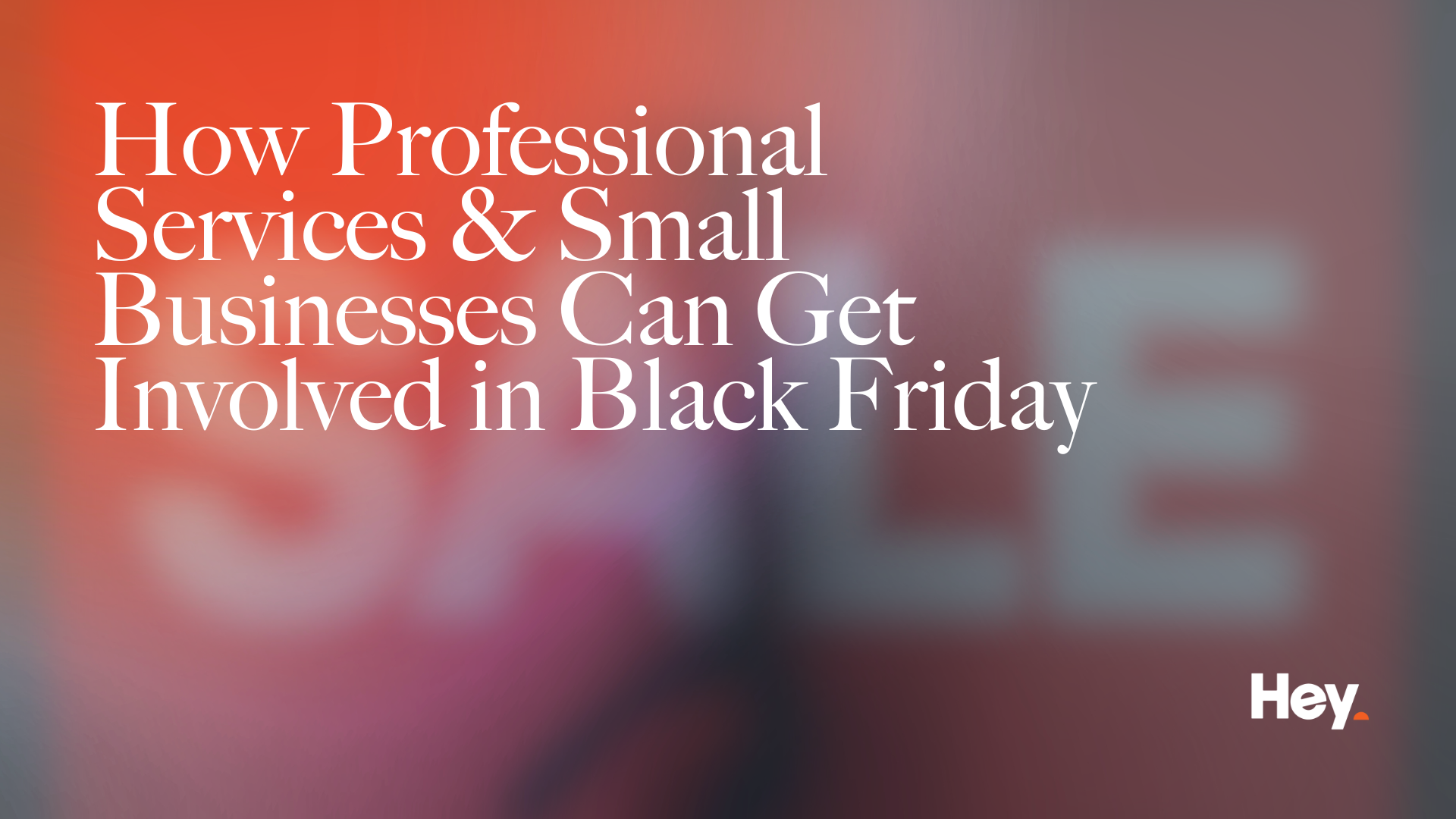
By Madeleine Riehl
•
October 27, 2025
Black Friday isn’t just for big-box retailers and eCommerce giants. Professional services and small businesses absolutely can (and should!) get involved in BFCM — you just have to get a little creative with what you’re offering and how you promote it. Here’s how: 1. Package your services like products Create limited-time service bundles or discounted packages that feel “Black Friday-worthy.” Examples: Accountants: End-of-year tax check + business health review Photographers: Mini shoot sessions with a BFCM discount Consultants/Coaches: 3-session packages at 20% off Make it time-bound. Make it feel exclusive. Slap a countdown timer on it and boom — instant urgency. 2. Offer Giftable Options Turn your service into a gift someone can give. Gift vouchers for your service “Book now, use later” offers for the holidays or new year Group discounts (e.g. buy a branding session, get a free strategy call for a friend) People love buying experiences, not just things. 3. Run a ‘VIP-Only’ Promotion Instead of going wide, go deep. Offer an exclusive deal to your best clients, email list, or followers. E.g. “We don’t usually do discounts, but here’s 25% off our most popular service for 24 hours — just for our email fam.” It feels personal and builds loyalty. 4. Create Urgency Without Slashing Prices If you don’t want to discount heavily, add value instead: Bonus inclusions (free consultation, template, review session) Extended support Upgrade to premium service for the base price You still ride the BFCM wave, without undercutting your worth. 5. Lean into Social & Email People expect BFCM emails and posts — so don’t sit this one out! Build anticipation: “Coming soon…” Share sneak peeks and behind-the-scenes prep Use countdowns, urgency-based subject lines, and fun social reels This is your chance to remind people you exist and you’re offering something special. 6. Partner with Other Local Business Legends Join forces with complementary businesses to create a BFCM bundle. A beauty therapist + pilates studio “Glow & Flow” package A dog groomer + pet photographer special It increases reach and makes it more exciting for your customers. You don’t need a warehouse of TVs or a Shopify store to join BFCM. You just need a great offer, a smart angle, some creative execution (that’s where we come in!) and a way to get it in front of the right people (also where we come in!). Your service is valuable, BFCM is your excuse to shout about it. Loudly. Let’s start a conversation around what your brand really needs and get strategic together.
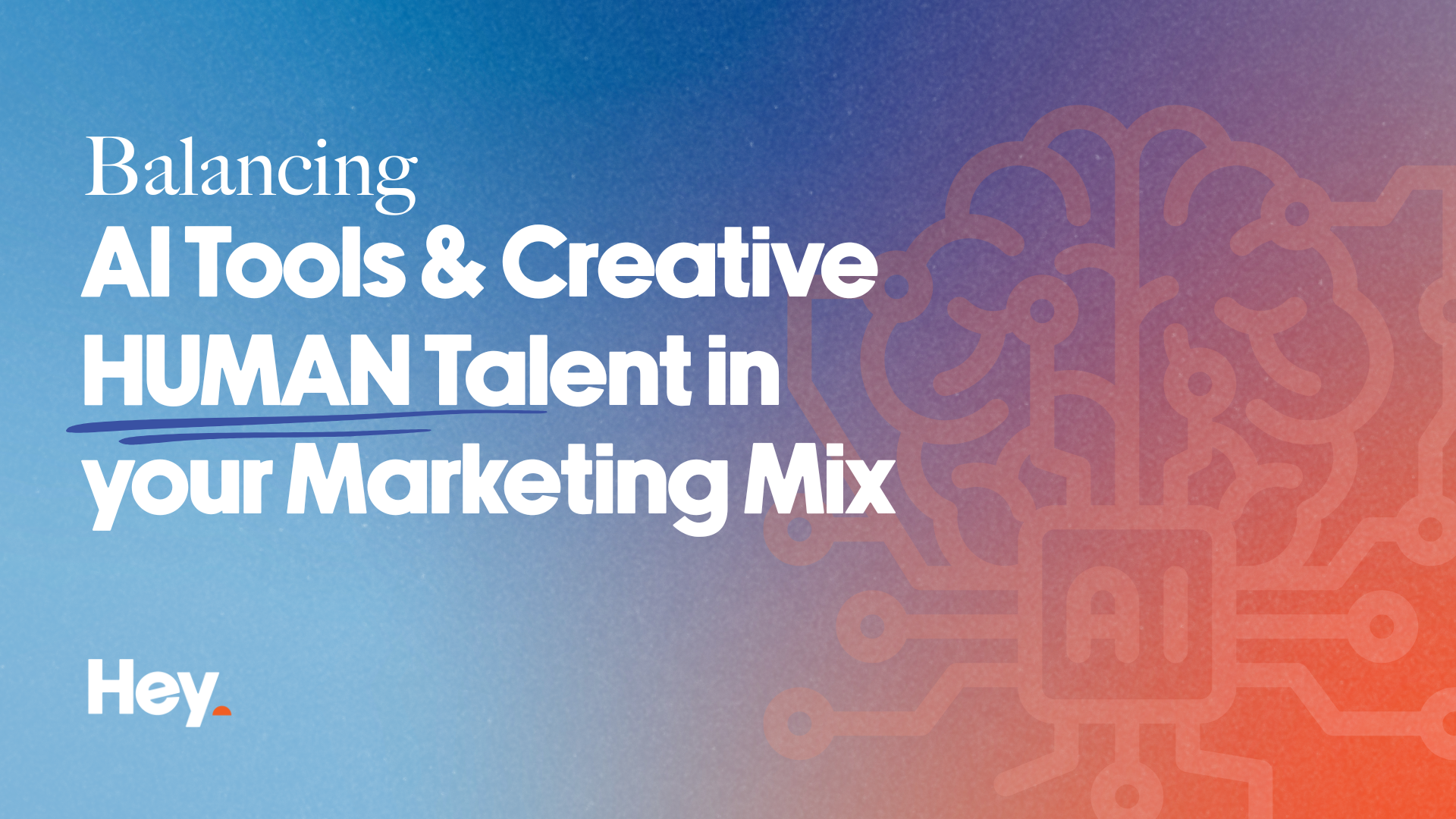
By Adam McGhee
•
October 15, 2025
Thinking about integrating AI into your marketing mix but worried it’ll suck the soul out of your campaigns? Or maybe you’ve already tried a few tools but the content feels robotic? This blog is for you. Let’s face it: Using only AI for your marketing is like giving someone a chef’s knife and ingredients, then expecting a gourmet meal. You need a balance if you want content that connects, converts, and still feels human. Here’s how the team here at Hey mixes AI tools into our workflow, while keeping our human creativity alive and authentic: Use AI For The Grunt Work, Not The Heart AI is amazing for repetitive or time‑consuming tasks: automation, first drafts, research, or data crunching. But it can’t feel the brand vibe or write with empathy. We let AI do the heavy lifting so we can focus on the storytelling, strategy, and nuance that machines just can’t nail. Start With A Human-Led Creative Brief Every project begins with a human vision. We outline objectives, time frames, tone of voice, audience, and key messaging before AI enters the picture. AI can then generate variations, suggest angles, or draft copy for us to tweak - but it’s never the one deciding the strategy or putting together the finished product. Make Collaboration Tangible We use tools like ChatGPT for copy inspiration, Meta for Ad headlines & CTA options, and Canva’s AI features for basic enhancements our Graphic Designers could do with their eyes shut. But every output gets a human review and final magic touch - sometimes it’s a word change, or sometimes retouching a design manually. Keep Your Voice Authentic AI can mimic tone, but it can’t truly understand culture, context, or inside jokes. We preserve authenticity by adding human stories, examples, facts & brand personality after AI drafts the content. A blog, social post, or email can only convert best when the human touch is visible. Experiment, Measure, Adjust Some AI-generated ideas work brilliantly, some flop. Track performance like you would with human-created content. Test subject lines, captions, visuals, or post formats and iterate based on results. AI speeds up the testing process but humans still make the strategic calls. Encourage Creativity, Not Complacency The danger is relying too much on AI and letting creativity stagnate. The magic in our strategy or brainstorming sessions still comes from bouncing ideas off of one another. Our team shares ideas, inspirations & variations on our previous success stories that AI could never come up with. Then we can loop AI in to expand or refine further, and choose whether to take that further towards the finish line or not. Takeaway? AI & Human Creativity Are Best Friends, Not Rivals The sweet spot is clear: use AI to remove friction, free up time, and explore possibilities - but keep humans at the core. That’s how marketing feels authentic, sparks connection, and keeps campaigns interesting. Balance is everything, and the right mix of tools can make your team as efficient as possible, freeing up more time to do what they do best. Need a strategy & some training? We’ve got you! Let’s start a conversation around what your brand really needs and get strategic together.
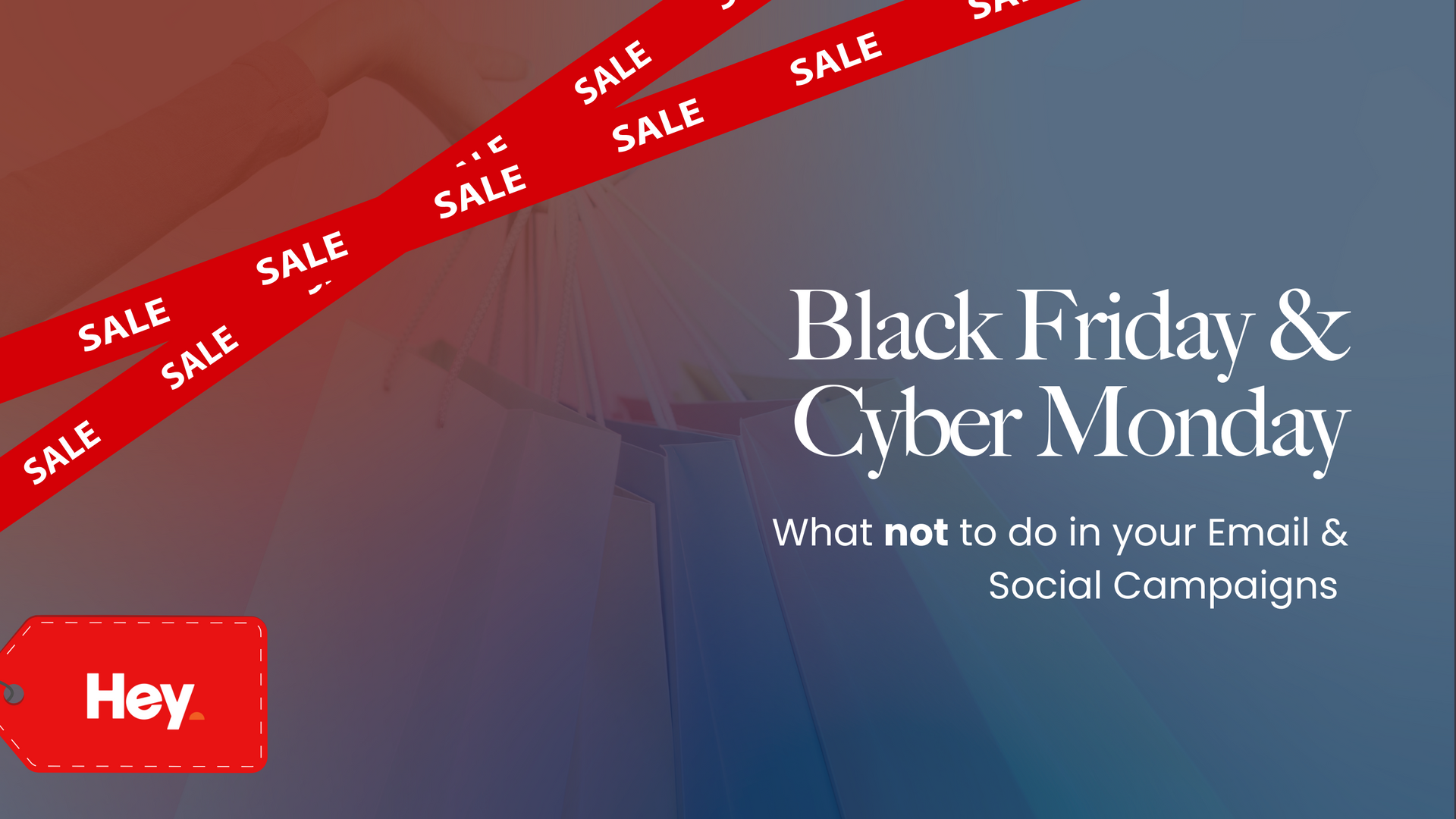
By Madeleine Riehl
•
September 25, 2025
Black Friday and Cyber Monday (BFCM) can be a goldmine… or a total flop…. Depending on how you play your cards. And while everyone’s focused on what to do, we’re flipping the script and diving into what not to do during the biggest sales weekend of the year. 1. Don't wait until last minute Your audience is already being bombarded with deals. If your emails and social posts are rushed or poorly timed, you’ll be lost in the noise. Plan early, schedule smart, and don’t wing it. The earlier you plan, the more room you have to test, tweak, and refine your campaigns before the big weekend. It also means you can avoid the stress of scrambling when things inevitably go wrong. A little organisation now saves you a whole lot of chaos later. 2. Avoid generic messaging “Big Sale! Don’t Miss Out!” 👀 Yawn. If your emails and captions sound like everyone else’s, they’ll be ignored like everyone else’s. Be specific, highlight value, and keep it on-brand. Your copy should sound like you, not a clearance bin. Think about what makes your brand irresistible and weave that into every message. Maybe it’s your playful personality, maybe it’s your quality guarantee, or maybe it’s your sense of community. Your unique angle is your secret weapon - use it to cut through the noise and speak directly to your audience. 3. Don't forget your mobile audience Over 60% of people shop on mobile during BFCM , if your email or landing page isn’t mobile-friendly, you’re basically asking them to bounce. That means buttons need to be thumb-friendly, text needs to be readable without zooming, and checkout flows should feel smooth. If your site takes forever to load or makes people pinch and swipe just to buy, you’ve already lost them. Be sure to test everything. 4. Don't spam your audience Yes, it’s a big sales moment, but more emails ≠ more sales. Be strategic with your send times, segment your lists, and respect the inbox. Same goes for social, don’t post for the sake of it. Instead, think quality over quantity. Craft messages that feel tailored and intentional, not like a bullhorn blasting the same message to everyone. A well-timed, relevant email is far more powerful than five forgettable ones. Respect earns attention, and attention turns into conversions. 5. Avoid unclear offers If your discount requires a math degree to figure out, it’s too complicated. Keep your offers clean, clear, and upfront. Bonus points if the deal feels too good to ignore. Clarity also builds trust. If shoppers feel like they’re jumping through hoops just to unlock a deal, they’ll head elsewhere. Remember KISS (keep it simple…. Silly!) 6. Don't go dark after the sale Engagement doesn’t end at checkout. Keep the momentum going with thank-you emails, review requests, or post-sale offers. Social media? Show off your community, share behind-the-scenes content, and ride that BFCM wave. Post-purchase communication is your best chance to turn one-time shoppers into loyal fans. Show gratitude, keep delivering value, and remind customers why they chose you in the first place. Final 2 cents... BFCM is about more than just blasting out deals, it’s about creating smart, intentional touchpoints that feel human and helpful. So skip the spray-and-pray, avoid the inbox assault, and keep it real. Need help cleaning up your strategy before the madness starts? Let’s talk!
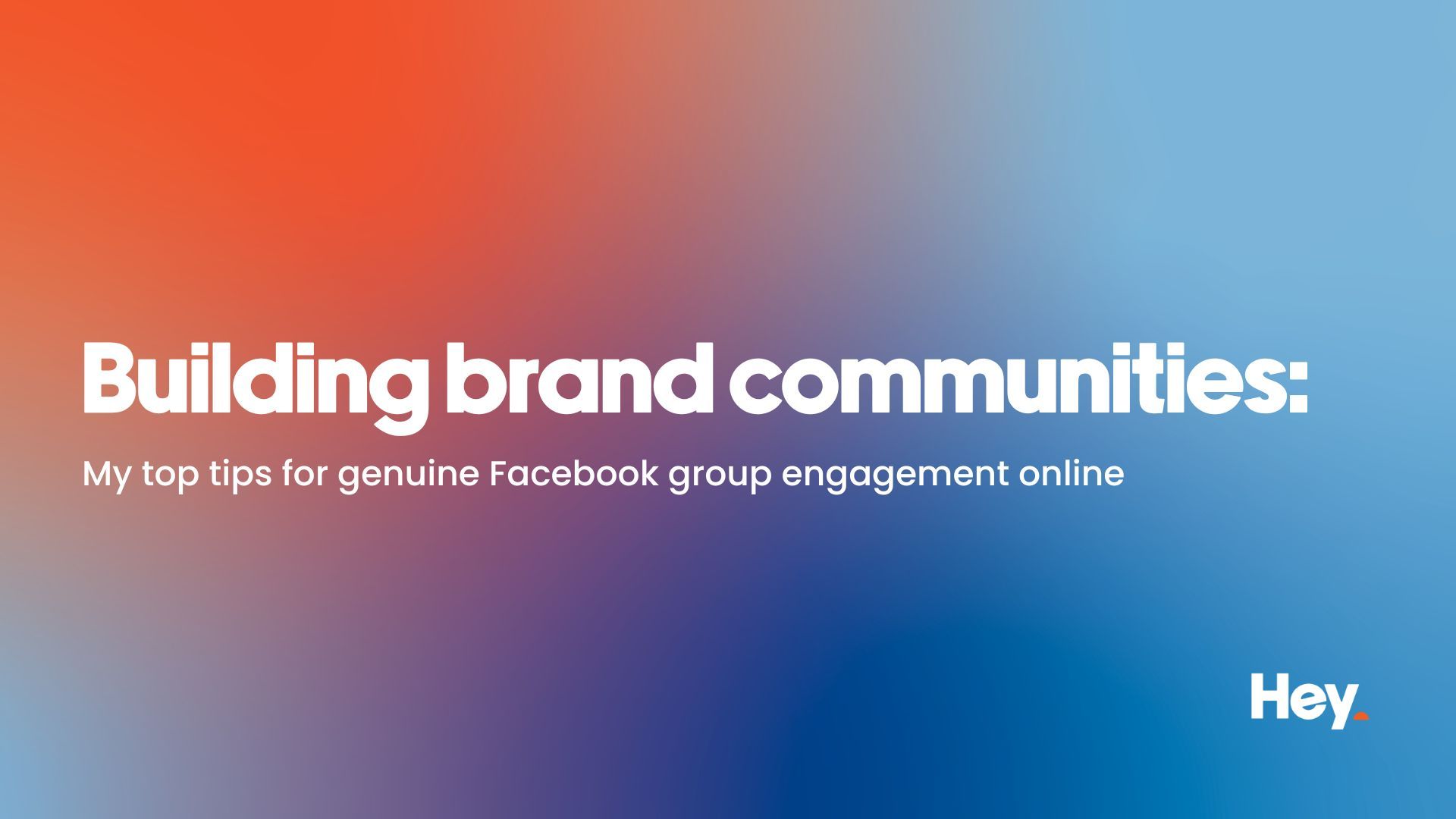
By Madeleine Riehl
•
September 15, 2025
Considering starting a Facebook group that aligns with your brand? Orrrr already got one that’s kind of flopping? This blog is for you.
Let’s face it: slapping together a Facebook group and hoping people chat is like planting a tree and waiting for it to grow… in a box… indoors.

By Madeleine Riehl
•
November 17, 2025
Tired of hearing the same marketing buzzwords that mean… well, nothing? You’re not alone. From “disruptive” to “game-changer,” these overused phrases can make your brand sound generic instead of genuine. Here’s how to ditch the fluff and speak with clarity, confidence, and real credibility. 1. Disruptive 🚫 Meaningless unless you’re actually changing an industry. ✅ Instead: “New approach”, “Innovative solution”, or explain how it’s different. 2. Authentic 🚫 Overused to the point of irony. ✅ Instead: Show the authenticity — don’t say it. Use storytelling, real voices, real people. 3. Synergy 🚫 Jargon-heavy and vague. ✅ Instead: “Working better together”, “Collaboration”, “Combined strengths”. 4. Game-changer 🚫 Unless it actually changes the game, this feels hollow. ✅ Instead: “Real impact on…”, “Major improvement in…” 5. Next-Gen/Next-Level 🚫 Lacks specificity. Next what? ✅ Instead: Explain what’s improved or different — faster? Easier? More powerful? 6. Cutting-Edge/Leading-Edge 🚫 Everyone claims this. Few prove it. ✅ Instead: Use a concrete example of the technology or practice that sets you apart. 7. Leverage 🚫 Sounds corporate and stiff. ✅ Use “Use”, “Apply”, “Tap into” instead — simpler and clearer. 8. Growth Hacking 🚫 Buzzwordy and often associated with spammy tactics. ✅ Instead: “Rapid growth strategy”, “Smart marketing tactics”. 9. Scalable 🚫 Can feel like investor speak, not customer-focused. ✅ Explain why it scales: “Built to grow with your business”. 10. Low Hanging Fruit 🚫 Feels lazy and condescending. ✅ Instead: “Quick wins”, “Immediate opportunities”. 11. Holistic 🚫 Vague and often misused. ✅ Instead: “All-in-one”, “Complete solution”, or be specific about what’s included. 12. Robust 🚫 Generic and unclear. ✅ Describe what’s strong about it.... durable? Secure? Flexible? 13. Paradigm Shift 🚫 Dramatic for the sake of drama. ✅ Be concrete: “A new way to think about…” 14. Optimize 🚫 Valid word, but can be overused without substance. ✅ Instead: Say what’s being improved, and how. 15. Value Added 🚫 Redundant. (If it doesn’t add value, why mention it?) ✅ Just say what the actual benefit is. If you can’t explain it simply, your customer won’t understand it either. Buzzwords feel safe, but they water down your message. Try swapping them for clear, conversational language that’s backed by proof, stories, or results. Need help sharpening your brand voice? Let’s make your message clear.

By Hannah Cook
•
November 10, 2025
Let's be real: right now, somewhere out there, your ideal customer is lying in bed watching a 12-second video of someone making pasta. Or folding laundry. Or taking you through their day in the life. Everywhere you look online, short-form video is setting the pace. From quick product reveals to fast how-to tips & behind-the-scenes snippets, bite-sized clips are now driving the way people interact online. If your brand isn’t speaking this language yet, we need to talk. Why Short Form Video Is King Let’s be honest, our attention spans are short. Thanks to TikTok, Instagram Reels, and the hypnotic pull of doom scrolling, we've all become masters of the split-second swipe or scroll. If something doesn't grab us immediately, we're gone. The great news is that this isn’t bad news for brands. It’s actually an incredible opportunity. Short-form video content has opened the door to connect with people in a way that feels immediate and authentic. In just a few seconds, brands can tell a story, highlight a product or spark curiosity, all while showing up where your audience already is (their ‘For You’ pages at 10pm!) The beauty of these platforms is the interaction they can create. Comments, shares and likes give direct & instant feedback, helping brands see what works and refine their approach on the go. How Do You Actually Do This In Your Social Media Mix? The heart of short form video is storytelling. Not in a fancy, corporate or over-produced way. We're talking real, human storytelling that makes people stop mid-scroll and pay attention. In an endless feed of content, standing out means showing up as you - addressing pain points, sharing wins, and maybe cracking a joke or two. Here's how to get started without overthinking it: 1. Know Your Audience Take the time to learn what your customers actually care about by using surveys, website analytics & social media insights to uncover their interests and challenges. Then build clear audience profiles so your content speaks directly to the people you want to reach. 2. Tell Real Stories Share genuine moments. Behind-the-scenes footage of your team, customer wins & even the occasional blooper. Authenticity builds trust faster than any polished ad ever could. And if humour fits your brand? Use it, but just keep it natural! 3. Inspire & Connect Highlight real wins and challenges that align with your brand values. Show empathy and keep your content relevant to what’s happening right now, this makes your brand feel more human and relatable. 4. Focus On Quality, But Keep It Real Yes, optimise for each platform. Yes, use good lighting and clear audio. But don't get so caught up in perfection that you lose the vibe. Encourage engagement by asking questions, sharing hot takes, or inviting opinions. The proof? It's in the pudding. Short-form video isn't just a nice-to-have; it's a game-changer. Our Hey clients have seen wild results, like one business that scored a 272% increase in impressions across Instagram and Facebook. We achieved this by partnering with a local journalist & influencer in our region to create authentic UGC style content - showcasing real local talent, asking quick-fire fire digestible questions & sharing off-the-cuff moments that resonated with the community. If you're still on the fence about short-form video, let this be your nudge. Your audience is already scrolling. The platforms are ready. The tools are there. All you need is the courage to hit record and be yourself.

By Adam McGhee
•
November 3, 2025
The holiday season is upon us, also referred to as the ‘silly’ season, and for small to medium businesses, it's a golden opportunity to boost sales and strengthen customer relationships. But with the digital landscape buzzing with festive promotions, how can you ensure your brand or business stands out without breaking the bank? Here are some practical, no-nonsense strategies to make the most of this silly season: Flash Sales & Social-Only Deals The end-of-year rush is prime time for exclusive deals. Flash sales, especially those exclusive to your social media followers or website visitors, can create a sense of urgency and reward loyalty. Black Friday and Cyber Monday are your chances to offer irresistible deals that drive traffic and conversions. Boxing Day is a perfect opportunity for customers to grab items they missed before the holidays now at discounted prices. To maximize impact, use compelling calls to action like “Hurry, limited time only!” or “Exclusive deal for our followers.” Consider adding perks such as free shipping, gifts with purchase, or buy-one-get-one-free offers to sweeten the deal. Stick to What Works The holiday season is not the time to test unproven marketing tactics. Rely on the strategies that have worked for you throughout the year. Consistency in messaging and branding helps maintain customer trust and recognition. Pay attention to what your customers have shown interest in leading up to the holiday period. Focus your campaigns on these popular items or services to increase the likelihood of conversion & leave testing new waters to the new year. Engage Through Social Media Social media is a powerful tool for reaching your audience during the holidays. Utilise both paid and organic posts to promote your seasonal offers. Paid ads can target your audience with creative campaigns that highlight your holiday deals. Organic posts can encourage engagement with messages like “Tag a friend to win a holiday gift” or “Share your holiday shopping list with us.” Optimise Your Website For Holiday Traffic Ensure your website is ready to handle the increased traffic during the holiday season. A seamless online experience can make the difference between a sale and a lost opportunity. Fast loading times are critical as slow websites can drive customers away. Make sure your site is mobile-friendly and easy to navigate so customers can find products and complete purchases quickly. Clear contact information including customer support and store locations is also essential. Build Relationships, Not Just Sales While the holiday season is a prime time for sales, it is also an opportunity to build lasting relationships with your customers. Personalized communication, exceptional customer service, and a genuine brand voice can turn one-time buyers into loyal patrons. Remember, the goal is not just to boost sales but to create memorable experiences that keep customers coming back long after the holidays are over. By implementing these strategies, you can navigate the silly season with confidence, ensuring your business not only survives but thrives during this bustling time of year. Want To Learn More? Sign up with your email address below to download your free “Silly Marketing Season 101” handbook, and get all the tips you need to make this holiday season a success.

By Adam McGhee
•
November 3, 2025
Thinking of running a Black Friday or Cyber Monday email blitz but worried your messages will get lost in the noise? That’s a very fair and real concern. But if you’re going to play along with BF & CM here’s a little go-to cheat sheet from us to you. Warm Them Up Early Don’t wait until the week of. Start teasing your offers weeks ahead. Send sneak peeks, early-access invites, or countdowns to build anticipation and prime your list for action. Segment Smartly One size doesn’t fit all. Use behaviour, purchase history, or customer value to segment your list. Reward loyal customers with VIP access, treat cart abandoners differently, and tailor offers based on what your segments care about. Diversify Your Offers Don’t just stick to one type of discount. Mix it up with bundles, buy one get one, freebies, or free shipping. Sometimes perceived value, like a gift or bundle, outperforms a straight discount. Make Scarcity Work For You Flash sales, quantity limits, or time-limited deals spark urgency. Use countdown timers, low-stock alerts, or “only a few left” messaging to push people to act. Tell A Story If offering steep discounts isn’t viable, tell a story. Share your brand’s journey, product inspiration, or customer stories to create emotional pull, especially when discounts are limited. Reward Your Top Customers Make your best buyers feel special. Give them early access, exclusive offers, or sneak-peek emails before you open sales to everyone else. Keep Your Emails Clean & Bold Your email needs to be scannable in a sea of promotions. Use strong imagery, short but clear copy, and visible calls to action. Include animation only if it enhances the message. Use Dynamic Content Trigger urgency with live elements like countdown clocks or low-stock messages. Personalised content such as product recommendations from past purchases can help drive clicks. Show Off A Little Include reviews, testimonials, or trust signals in your emails to reduce hesitation and enhance credibility. Craft Subject Lines That Cut Through Your subject line must grab attention fast. Use intrigue, urgency, and relevance to the offer to stand out in crowded inboxes. Time It Right During Black Friday and Cyber Monday, inboxes are overflowing. To cut through the noise, experiment with sending your emails at less common times. Early mornings, late evenings, or even weekends can help your campaigns land when competition is lower and visibility is higher. Pick Your Audience It’s also worth being strategic about who you send to. Instead of blasting your entire database, focus on the subscribers who are actually engaging with your emails. Clean Your List Before The Big Push Remove unengaged contacts ahead of time. It improves deliverability and reduces the risk of hitting spam filters during heavy sending periods. Multi Channel It!!! Don't Rely Only On Email Combine your emails with SMS, push notifications, or social media to maximise reach. Multiple touchpoints help when inboxes are overloaded. Follow Up After The Sale Once Cyber Monday ends, don’t stop communicating. Send thank-you messages, request reviews, promote related products, or start a welcome journey for new customers to keep them engaged. Want A Little More Help? Sign up with your email below for a free Klaviyo audit on your account & find out how to get the most out of your email marketing this Black Friday & Cyber Monday. Only 3 spots available in first week of November 🏃🏻🏃🏼♀️

By Madeleine Riehl
•
October 27, 2025
Black Friday isn’t just for big-box retailers and eCommerce giants. Professional services and small businesses absolutely can (and should!) get involved in BFCM — you just have to get a little creative with what you’re offering and how you promote it. Here’s how: 1. Package your services like products Create limited-time service bundles or discounted packages that feel “Black Friday-worthy.” Examples: Accountants: End-of-year tax check + business health review Photographers: Mini shoot sessions with a BFCM discount Consultants/Coaches: 3-session packages at 20% off Make it time-bound. Make it feel exclusive. Slap a countdown timer on it and boom — instant urgency. 2. Offer Giftable Options Turn your service into a gift someone can give. Gift vouchers for your service “Book now, use later” offers for the holidays or new year Group discounts (e.g. buy a branding session, get a free strategy call for a friend) People love buying experiences, not just things. 3. Run a ‘VIP-Only’ Promotion Instead of going wide, go deep. Offer an exclusive deal to your best clients, email list, or followers. E.g. “We don’t usually do discounts, but here’s 25% off our most popular service for 24 hours — just for our email fam.” It feels personal and builds loyalty. 4. Create Urgency Without Slashing Prices If you don’t want to discount heavily, add value instead: Bonus inclusions (free consultation, template, review session) Extended support Upgrade to premium service for the base price You still ride the BFCM wave, without undercutting your worth. 5. Lean into Social & Email People expect BFCM emails and posts — so don’t sit this one out! Build anticipation: “Coming soon…” Share sneak peeks and behind-the-scenes prep Use countdowns, urgency-based subject lines, and fun social reels This is your chance to remind people you exist and you’re offering something special. 6. Partner with Other Local Business Legends Join forces with complementary businesses to create a BFCM bundle. A beauty therapist + pilates studio “Glow & Flow” package A dog groomer + pet photographer special It increases reach and makes it more exciting for your customers. You don’t need a warehouse of TVs or a Shopify store to join BFCM. You just need a great offer, a smart angle, some creative execution (that’s where we come in!) and a way to get it in front of the right people (also where we come in!). Your service is valuable, BFCM is your excuse to shout about it. Loudly. Let’s start a conversation around what your brand really needs and get strategic together.

By Adam McGhee
•
October 15, 2025
Thinking about integrating AI into your marketing mix but worried it’ll suck the soul out of your campaigns? Or maybe you’ve already tried a few tools but the content feels robotic? This blog is for you. Let’s face it: Using only AI for your marketing is like giving someone a chef’s knife and ingredients, then expecting a gourmet meal. You need a balance if you want content that connects, converts, and still feels human. Here’s how the team here at Hey mixes AI tools into our workflow, while keeping our human creativity alive and authentic: Use AI For The Grunt Work, Not The Heart AI is amazing for repetitive or time‑consuming tasks: automation, first drafts, research, or data crunching. But it can’t feel the brand vibe or write with empathy. We let AI do the heavy lifting so we can focus on the storytelling, strategy, and nuance that machines just can’t nail. Start With A Human-Led Creative Brief Every project begins with a human vision. We outline objectives, time frames, tone of voice, audience, and key messaging before AI enters the picture. AI can then generate variations, suggest angles, or draft copy for us to tweak - but it’s never the one deciding the strategy or putting together the finished product. Make Collaboration Tangible We use tools like ChatGPT for copy inspiration, Meta for Ad headlines & CTA options, and Canva’s AI features for basic enhancements our Graphic Designers could do with their eyes shut. But every output gets a human review and final magic touch - sometimes it’s a word change, or sometimes retouching a design manually. Keep Your Voice Authentic AI can mimic tone, but it can’t truly understand culture, context, or inside jokes. We preserve authenticity by adding human stories, examples, facts & brand personality after AI drafts the content. A blog, social post, or email can only convert best when the human touch is visible. Experiment, Measure, Adjust Some AI-generated ideas work brilliantly, some flop. Track performance like you would with human-created content. Test subject lines, captions, visuals, or post formats and iterate based on results. AI speeds up the testing process but humans still make the strategic calls. Encourage Creativity, Not Complacency The danger is relying too much on AI and letting creativity stagnate. The magic in our strategy or brainstorming sessions still comes from bouncing ideas off of one another. Our team shares ideas, inspirations & variations on our previous success stories that AI could never come up with. Then we can loop AI in to expand or refine further, and choose whether to take that further towards the finish line or not. Takeaway? AI & Human Creativity Are Best Friends, Not Rivals The sweet spot is clear: use AI to remove friction, free up time, and explore possibilities - but keep humans at the core. That’s how marketing feels authentic, sparks connection, and keeps campaigns interesting. Balance is everything, and the right mix of tools can make your team as efficient as possible, freeing up more time to do what they do best. Need a strategy & some training? We’ve got you! Let’s start a conversation around what your brand really needs and get strategic together.

By Madeleine Riehl
•
September 25, 2025
Black Friday and Cyber Monday (BFCM) can be a goldmine… or a total flop…. Depending on how you play your cards. And while everyone’s focused on what to do, we’re flipping the script and diving into what not to do during the biggest sales weekend of the year. 1. Don't wait until last minute Your audience is already being bombarded with deals. If your emails and social posts are rushed or poorly timed, you’ll be lost in the noise. Plan early, schedule smart, and don’t wing it. The earlier you plan, the more room you have to test, tweak, and refine your campaigns before the big weekend. It also means you can avoid the stress of scrambling when things inevitably go wrong. A little organisation now saves you a whole lot of chaos later. 2. Avoid generic messaging “Big Sale! Don’t Miss Out!” 👀 Yawn. If your emails and captions sound like everyone else’s, they’ll be ignored like everyone else’s. Be specific, highlight value, and keep it on-brand. Your copy should sound like you, not a clearance bin. Think about what makes your brand irresistible and weave that into every message. Maybe it’s your playful personality, maybe it’s your quality guarantee, or maybe it’s your sense of community. Your unique angle is your secret weapon - use it to cut through the noise and speak directly to your audience. 3. Don't forget your mobile audience Over 60% of people shop on mobile during BFCM , if your email or landing page isn’t mobile-friendly, you’re basically asking them to bounce. That means buttons need to be thumb-friendly, text needs to be readable without zooming, and checkout flows should feel smooth. If your site takes forever to load or makes people pinch and swipe just to buy, you’ve already lost them. Be sure to test everything. 4. Don't spam your audience Yes, it’s a big sales moment, but more emails ≠ more sales. Be strategic with your send times, segment your lists, and respect the inbox. Same goes for social, don’t post for the sake of it. Instead, think quality over quantity. Craft messages that feel tailored and intentional, not like a bullhorn blasting the same message to everyone. A well-timed, relevant email is far more powerful than five forgettable ones. Respect earns attention, and attention turns into conversions. 5. Avoid unclear offers If your discount requires a math degree to figure out, it’s too complicated. Keep your offers clean, clear, and upfront. Bonus points if the deal feels too good to ignore. Clarity also builds trust. If shoppers feel like they’re jumping through hoops just to unlock a deal, they’ll head elsewhere. Remember KISS (keep it simple…. Silly!) 6. Don't go dark after the sale Engagement doesn’t end at checkout. Keep the momentum going with thank-you emails, review requests, or post-sale offers. Social media? Show off your community, share behind-the-scenes content, and ride that BFCM wave. Post-purchase communication is your best chance to turn one-time shoppers into loyal fans. Show gratitude, keep delivering value, and remind customers why they chose you in the first place. Final 2 cents... BFCM is about more than just blasting out deals, it’s about creating smart, intentional touchpoints that feel human and helpful. So skip the spray-and-pray, avoid the inbox assault, and keep it real. Need help cleaning up your strategy before the madness starts? Let’s talk!

By Madeleine Riehl
•
September 15, 2025
Considering starting a Facebook group that aligns with your brand? Orrrr already got one that’s kind of flopping? This blog is for you.
Let’s face it: slapping together a Facebook group and hoping people chat is like planting a tree and waiting for it to grow… in a box… indoors.
